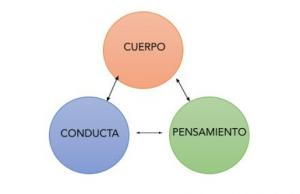Synaptic knobs: what they are and how they work
Synaptic knobs, also called axon terminals or synaptic bulbs, are divisions of the extreme part of the axon that form synapses with other neurons or with muscle cells or glands.
In these bulbs the neurotransmitters are stored, that is, the biomolecules in charge of transmitting information from a neuron to another cell type (either a target tissue of another biological nature or another neuron).
Recent studies have calculated that the human brain contains 86 billion neurons, an inconceivable astronomical figure for anyone. Therefore, it is not surprising that this cellular network is the cause of our thinking, relationship with the environment, emotions and any characteristic that defines us as "autonomous entities".
It is for these reasons that knowing the nervous processes in our body is essential. Synaptic buttons are vital structures for the exchange of information between neurons to take place., and therefore, in this space we tell you everything you need to know about them.
- Related article: "What are the parts of the neuron?"
What are synaptic knobs?
We cannot launch ourselves into investigating paths as complex as synaptic bulbs without first defining where they are, what they produce, and what their relationship is with the surrounding cells. Go for it.
about the neuron
The neuron is a cell type like any other, since it presents its own nucleus, is delimited from the rest of the environment and is capable of nourishing itself, growing and differentiating itself (among many other qualities).
What makes this structure a distinctive unit is its specialization, since its function is to receive, process and transmit information through chemical and electrical signals. Quickly, we can distinguish three main parts in the morphology of the neuron:
- Soma: cell body that contains the nucleus, cytoplasm and organelles.
- Dendrites: numerous, branching extensions of the cell body that are in contact with other neurons.
- axon: prolongation of the cell body in the form of an "elongated bead necklace".
Synaptic buttons are located at the distal end of the neuron., that is, at the end of the axons. The next part of understanding these complex structures is discovering that they store neurotransmitters, but what exactly are these molecules?
About neurotransmitters
As we have already said before, neurotransmitters are organic molecules that allow the transmission of information from a neuron to another cell body. Various bibliographic sources show that for a neurotransmitter to be considered such, it must meet certain characteristics.. We list them for you:
- The substance must be present inside the neuron.
- The enzymes that allow the synthesis of the substance have to be present in the area where the neurotransmitter is produced.
- The effect of the neurotransmitter must be promoted even if it is applied exogenously to the target cell.
Neurotransmitters, foreign as they may seem to the general population, they are nothing more than organic compounds like all those that make up living structures. For example, acetylcholine, one of the most famous, is made up of carbon, oxygen, hydrogen and nitrogen.
It should be noted that these biological compounds are very similar to hormones, but one characteristic differentiates them essential: hormones generate responses in target cells no matter how far away they are, as they circulate in the torrent sanguine. On the other hand, neurotransmitters only communicate with the immediate neuron through the synapse.
There is a considerable variety of neurotransmitters, including acetylcholine, dopamine, norepinephrine, serotonin, glycine, and glutamate. Each one has a special composition and function. For example, serotonin (90% of which is stored in the gastrointestinal tract and platelets blood) is an essential neuromodulator in mood, anger, memory, sexuality, and attention. Who would have thought that a small biomolecule would encode our day-to-day behavior in such a way?
We've understood where the synaptic knobs are and what they store, but a new term has just come into play: the synapse. We have no choice but to address this process in the following lines.
About the synapse
Neurons communicate with each other through a process called synapses.. This can be electrical or chemical in nature, depending on the method of transmitting information.
At electrical synapses, information is transmitted by an exchange of ions between closely adherent cells. Neurotransmitters do not play an essential role here, since the nerve impulse is transmitted directly from one cell to another by the exchange of these ionic molecules. It is a "more basic" communication, present in a majority way in vertebrates less complex than mammals.
Besides, chemical synapses are those that use the previously named neurotransmitters to transmit information from a neuron to the target cell (be it a neuron or another type of cell body). To simplify things, we will limit ourselves to saying that the arrival of the nerve impulse through all the cell body to the synaptic knobs promotes the release of neurotransmitters there stored.
These biomolecules are stored in vesicles or "bubbles". When the excitation signal reaches these bulbs, the vesicles fuse with the membrane of the bulb, allowing the release of stored neurotransmitters by a process called "exocytosis".
Thus, the neurotransmitters are released in the synaptic space, that is, the physical distance between the two neurons that are transmitting information, for later adhere to the membrane of the post-synaptic neuron, that is, the receptor of information that will be in charge of transmitting the new impulse to another cell target, and so on.
Although it seems like a merely microscopic and metabolic world, all these small biomolecules and electrical impulses are in charge of the biological calculations that are translated, in a behavioral field, into processes as essential as the perception of the environment and thought human. Fascinating, right?
- You may be interested in: "Parts of the Nervous System: functions and anatomical structures"
essential neuron endings
Thus, as we have dissected in each of the previous sections, synaptic boutons are neuron axon endings that store neurotransmitters and they release them into the environment so that the synapse can take place, that is, the communication between neurons or between a neuron and another target cell.
Various studies try to understand the efficacy and nature of these synaptic bulbs. For example, in rodents it has been observed that there are a reduced number of thalamocortical buttons, but these present a very efficient synapse due to their structural composition.
We must bear in mind that cell bodies show variations according to their zone of action and their function. For example, these investigations underscore that the buttons can present morphological diversity in terms of size, number, presence of mitochondria and number of vesicles (which we remember that store neurotransmitters) are present. All this, presumably, determines the efficiency and speed of the transmission of the nerve signal.
Other studies show us clear examples of the functionality of these buttons in specific processes and diseases, for example, in the neuromuscular junctions. For example, the terminal buttons of these neurons have vesicles with about 10,000 molecules of acetylcholine, the which, when released and received by the muscle tissue cells, cause a response in the muscles of the individual.
conclusions
As we have seen, the synaptic buttons are one more piece of the puzzle to understand the relationship and communication between the components of our nervous system. Neurotransmitters are stored in them, the biomolecules responsible for transmitting information between the pre-synaptic and post-synaptic cells..
Without this communication at the microscopic and cellular level, life as we understand it would not be possible. For example, for a finger to receive the signal to move before fire, this stimulus must be received by the finger. brain, and without communication between each of the components of our body, this signal would never arrive. For all these reasons, we could say that the synapse is the response mechanism that allows life as we know it today in animals.
Bibliographic references:
- Arce, E. (1995). Neural networks for process control. Publication of the Mexican Institute of Chemical Engineers.
- Campo, P. Q. (2007). Physiological bases of visual training. Apunts Physical Education and Sports, (88), 62-74.
- Papazian, O., Alfonso, I., & Araguez, N. (2009). JUVENILE MYASTHENIA GRAVIS. Medicine (Buenos Aires), 69(1).
- Rodriguez Moreno, J. (2017). Synaptic structure of thalamocortical circuits: 3D quantitative analysis of synaptic knobs from the ventral posteromedial and posterior nuclei of the adult mouse.
- Synapse between neurons, University of Alcalá de Henares (UAH). Collected on August 29 in http://www3.uah.es/bioquimica/Tejedor/bioquimica_ambiental/tema12/tema%2012-sinapsis.htm



